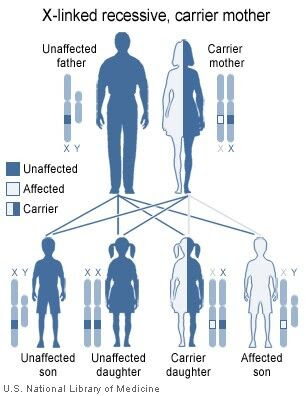Duchenne Muscular Dystrophy( DMD is an X-linked recessive disorder, i.e. only boys are affected, caused by a mutation in the dystrophin gene (chromosome Xp21.3). This site codes for a protein called dystrophin, which connects the cytoskeleton of a muscle fiber to the surrounding extracellular matrix through the cell membrane. Where it is deficient, there are several aberrant intracellular signaling pathways associated with an influx of calcium ions, a breakdown of the calcium calmodulin complex, and an excess of free radicals, ultimately leading to myofibre necrosis. The serum creatine phosphokinase (CPK) is markedly elevated.
CLINICAL FEATURES
Normal early motor development,
- Proximal limb weakness - Evident from 3 years of age. Gower's sign present (a maneuver to stand from lying down involving rolling over, then using the hands to "climb up" the knees. Wadding ( Trendelenburg) gait.
- Calf muscle pseudohypertrophy - As a toddler. These calves are due to the replacement of normal muscle tissue with connective tissue.
 |
| Calves |
- Progressive deterioration - Eventually wheelchair-bound (usually by teenage) with scoliosis. Pharyngeal weakness and respiratory failure develop.
- Cardiac muscle - Dilated cardiomyopathy(enlarges and weakens the heart cardiac muscle, preventing the heart from pumping blood efficiently).
- Learning disability - In one-third.







Comments
Post a Comment